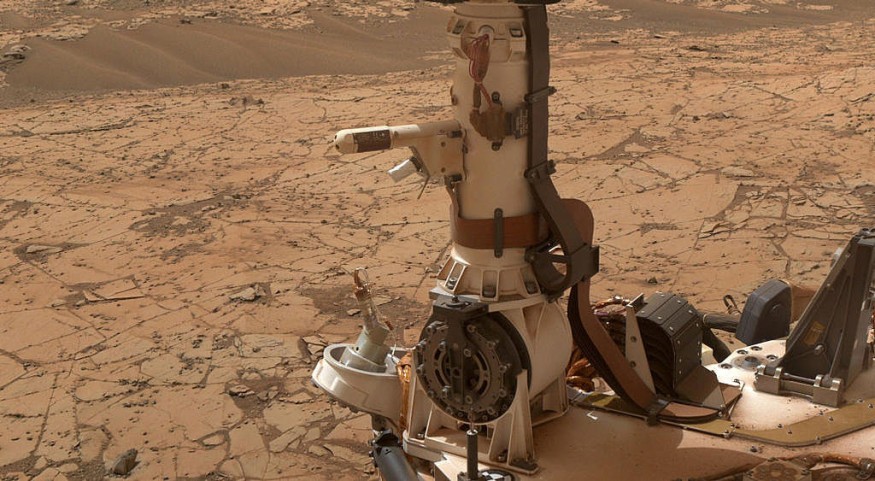To decipher Mars' changing habitability, researchers recently studied rock records, a physical record of ancient processes of its surface which reflect the environment, as well as the prevailing climate at the time the rocks were placed.
A Phys.org report said, understanding if the Red Planet was once able to support life, has been a main driving force for research on Mars over the last five decades.
In a new study, researchers on the NASA-JPL Mars Science Laboratory mission used the Curiosity rover to add one more piece to the puzzle of the ancient past of Mars by examining a unit of rocks within the Gale crater.
As a result, they discovered evidence of an ancient dune field preserved as a rock layer in Gale crater, which partly covers rock layers that were placed in a large lake. The remnants of rocks of the dune field are called today as the 'Stimson' formation.

Ancient Dunes
Findings of the study entitled "A Rock Record of Complex Aeolian Bedforms in a Hesperian Desert Landscape: The Stimson Formation as Exposed in the Murray Buttes, Gale Crater, Mars," published in JGR Planets helped scientists understand surface and atmospheric processes -- like the direction the wind was blowing sand for the formation of dunes, and possibly, how Mars' climate evolved from an environment that possibly harbored bacterial life, to an uninhabitable one.
As indicated in the study, by looking at the preserved layers of rocks through images retrieved by the Curiosity rover, the study authors reconstructed the shape, relocation direction, and size of the large dunes, called 'draas' that occupied that part of the crater.
The representations of ancient dunes which Imperial researchers created, presents that dunes were nestled, next to the Gale crater's central peak also called Mount Sharp, on what the researchers described as a wind-eroded surface, at a five-degree angle.
The researchers also discovered that the dunes were compound dunes, large ones hosting their own set of tinier dunes that traveled in different directions to the main dune.
Sand Dunes
Dr. Steven Banham, the study's lead author from Imperial's Department of Earth Science and Engineering said that as the wind is blowing, it is transporting sand trans of a specific size, and organizing them into piles of sand they recognize as sand dunes.
Such landforms are common in sandy deserts on Earth like the Sahara, the Arabian deserts, and the Namibian dune field.
The wind's strength, as well as its uniformity of direction, controls the dune's size and shape, and its evidence can be preserved in the rock record.
If there is an excess of sediment, Dr. Banham explained, that's transported into a region, dunes can climb as they travel and partly bury adjacent dunes.
Cross-Bedding
The said buried layers have a feature also known as 'cross-bedding,' which, according to Keweenaw Geoheritage, can provide a specification of the dunes' size, as well as the direction they were migrating.
By thoroughly examining such cross-beds, the researchers were able to identify these strata that were placed by particular dunes that form when competing winds migrate sediment in two different directions.
The lead author said it is amazing that from looking at Martian rocks, they could specify that two competing winds drove the large dunes across Gale crater's plains, three-and-a-half billion years ago. This, he continued, is one of the first evidence they have of adaptable wind directions, whether they are seasonal or otherwise.
Mount Sharp's lower part comprised ancient lakebed sediments. These built upon the lakebed when the crater flooded, soon after it formed 3.8 billion years ago. Curiosity has spent many of its remaining nine years investigating the rocks for indications of habitability.
Cross-bedding is explained in a related report shown on Virtual Field Trip's YouTube video below:
RELATED ARTICLE : Trial Device MOXIE Could Contribute to Rocket Launch Off Mars
Check out more news and information on Mars on Science Times.












